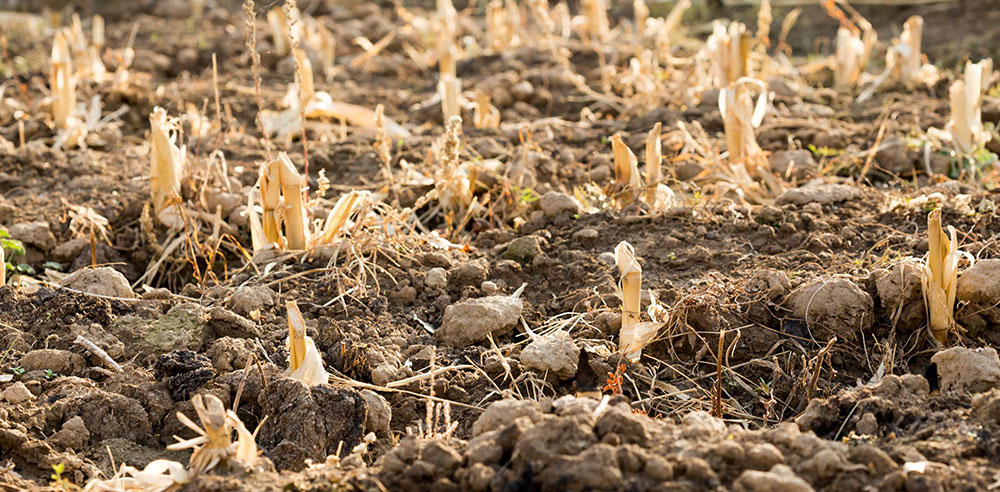
Also, according to Sass, no-till allows the soil to absorb much more water and handle heavy rain, which keeps soil on the field and out of the watershed. He continues, “No-till will save you time and money. You’ll spend less time on your tractor. You’ll use less fuel. You’ll have less wear and tear on your equipment. No-till is a win-win for your soil and for your pocketbook.”
Which is not to say that there is nothing you can do in the fall to help prepare your soil for spring planting and fortify the microbiome. Our Fertil Humus® product, when applied in the fall, can help degrade any crop residue or crop field trash that’s left behind and convert it to humus over the winter. It also stimulates microbial activity, especially mycorrhizal fungi that have a symbiotic relationship with plant roots. These fungi play a key role in freeing nutrients that are tied up in soil organic matter.
Fertil Humus® will buffer the toxicities of left-over pesticides, breaking their hydrocarbon chains to render them ineffective. It will also decrease phosphorus toxicity (e.g., from over-applied chicken manure) that can lead to zinc-manganese tie-up/deficiency. For fall after-harvest field application, we recommend Fertil Humus® at 1–2 quarts/acre (2.5–5.0 liters/hectare) as a broadcast spray or flood or furrow irrigated. This will set up your soil for spring planting with better tilth, microbial activity, and nutrient availability.
For more information on Fertil Humus® click here, or contact a Huma representative. For more about our Huma® plant & soil products, click here.
Related Posts

Liquid Sili-Max® Improves Wheat Yield at Much Higher Efficiency Than Conventional Dry Silicon Fertilizers
Research by Brenda Tubana, PhD, Louisiana State University The objective of this study was to compare, for use in Louisiana wheat production, the efficacy of a liquid silicon (Si) fertilizer (Huma Gro® Sili-Max®) with a commonly used dry Si source (steel slag) and another Si source (wollastonite) often used in research as a suspension. Silica deposition is an important

The Huma Gro Farmer Podcast: Episode 3 – Soil Biology and Soil Health with Zap®
In The Huma Gro Farmer podcast, Episode 3, we discuss Soil Biology and Soil Health with Zap®. Because a healthy soil biology is vital to a healthy crop, we must rebuild soil biology after fumigant or pesticide use. We discuss this with our experts, Bio Huma Netics, Inc. President and CEO Lyndon Smith, and Eastern U.S. Sales Manager and Agronomist Barrett Smith. Join us as we discuss how Zap® rebuilds soil biology after fumigant/pesticide use.

Introduction to Huma Gro®: Video

